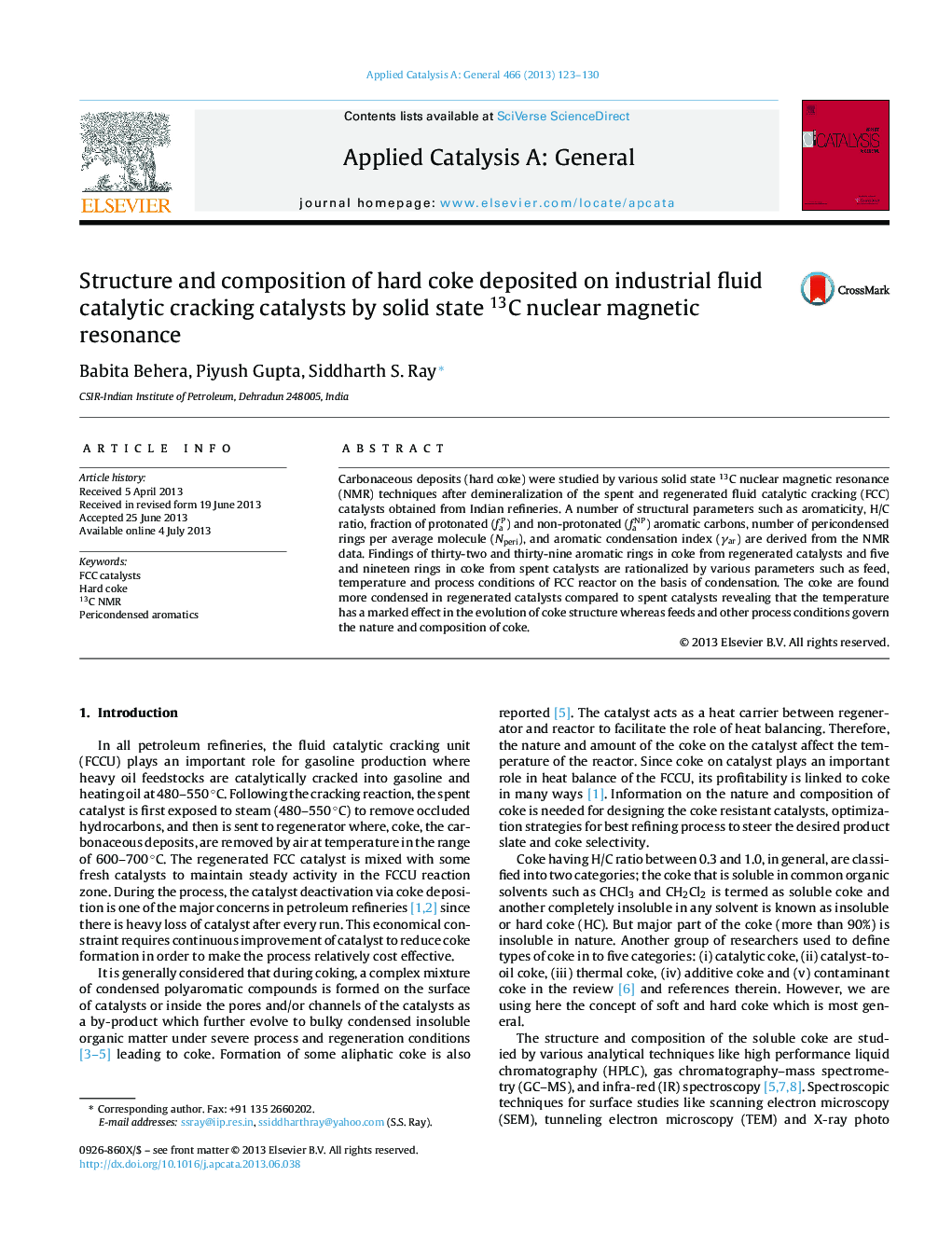| Article ID | Journal | Published Year | Pages | File Type |
|---|---|---|---|---|
| 40298 | Applied Catalysis A: General | 2013 | 8 Pages |
•Coke extracted from regenerated and spent FCC catalysts via demineralization.•Structure and composition of coke studied by various solid state NMR techniques.•Coke are more condensed in regenerated catalysts compared to spent catalysts.•Temperature affects coke structure; feed and process on the nature and composition.
Carbonaceous deposits (hard coke) were studied by various solid state 13C nuclear magnetic resonance (NMR) techniques after demineralization of the spent and regenerated fluid catalytic cracking (FCC) catalysts obtained from Indian refineries. A number of structural parameters such as aromaticity, H/C ratio, fraction of protonated (faP) and non-protonated (faNP) aromatic carbons, number of pericondensed rings per average molecule (Nperi), and aromatic condensation index (γar) are derived from the NMR data. Findings of thirty-two and thirty-nine aromatic rings in coke from regenerated catalysts and five and nineteen rings in coke from spent catalysts are rationalized by various parameters such as feed, temperature and process conditions of FCC reactor on the basis of condensation. The coke are found more condensed in regenerated catalysts compared to spent catalysts revealing that the temperature has a marked effect in the evolution of coke structure whereas feeds and other process conditions govern the nature and composition of coke.
Graphical abstractFigure optionsDownload full-size imageDownload high-quality image (206 K)Download as PowerPoint slide
